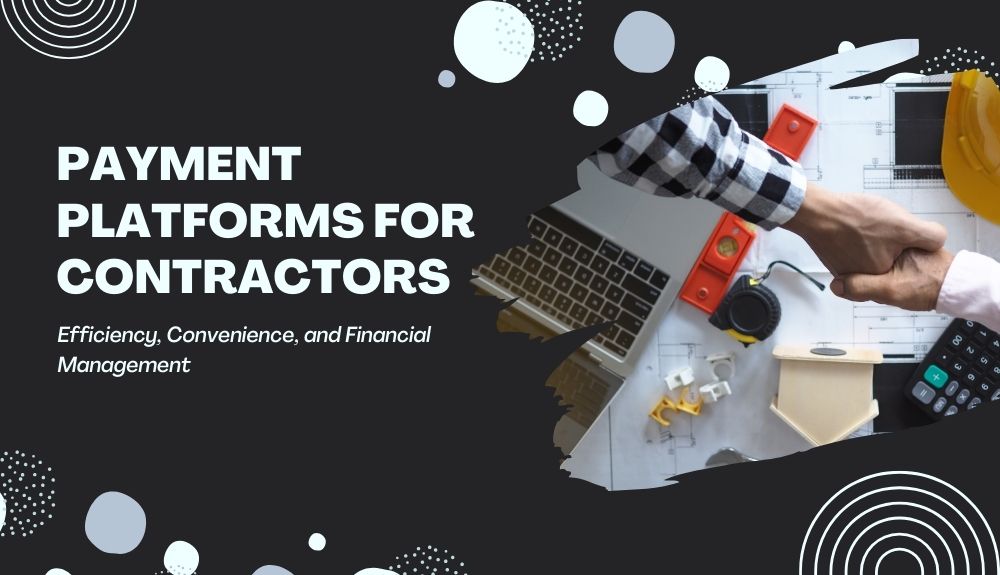Introduction to Integrated Payment Platforms for Contractors
Are you a contractor looking to streamline your payment processes and boost your financial efficiency? Integrated Payment Platforms might just be the game-changer you’ve been waiting for! Say goodbye to manual transactions and hello to a world of convenience, accuracy, and cost-saving opportunities. Let’s dive into the benefits these platforms can offer contractors like yourself.
Streamlining Business Operations with Integrated Payment Platforms
Are you tired of juggling multiple payment systems and chasing down invoices as a contractor? Integrated payment platforms offer a seamless solution to streamline your business operations. By consolidating all your transactions into one central hub, you can save time and eliminate the hassle of manual processes.
Imagine being able to track payments, send invoices, and reconcile accounts with just a few clicks. With integrated payment platforms, you can automate repetitive tasks and focus on growing your business instead of getting bogged down in administrative work.
Not only do these platforms simplify the payment process, but they also provide valuable insights into your financial health. Real-time reporting allows you to make informed decisions based on up-to-date data, giving you a competitive edge in the market.
Say goodbye to errors and disputes caused by manual input or delayed payments. Integrated payment platforms ensure accuracy and security by automating the entire transaction process from start to finish. Your clients will appreciate the professionalism and efficiency that comes with using a modern payment system.
Take advantage of cost-savings opportunities by reducing overhead expenses associated with traditional payment methods. Increased profitability is within reach when you leverage technology to optimize your financial management practices as a contractor. Choose an integrated payment platform that aligns with your business needs for maximum impact on streamlining operations effectively!
The Convenience of Digital Payments for Contractors
Contractors are constantly on the move, juggling multiple projects and deadlines. The convenience of digital payments offers a seamless way to receive funds quickly and securely. With just a few clicks, contractors can easily invoice clients and get paid without the hassle of paper checks or physical cash.
Digital payment platforms eliminate the need for manual processing, saving time and reducing the risk of errors or delays in payment. Contractors can track their transactions in real-time, giving them greater visibility into their financial status. This transparency allows for better budgeting and planning for future projects.
Moreover, digital payments offer flexibility by allowing contractors to accept various forms of payment such as credit cards, ACH transfers, or mobile wallets. This versatility caters to different client preferences while streamlining the payment process for both parties involved.
Embracing digital payments not only enhances convenience but also ensures efficiency and security in managing financial transactions for contractors.
Real-Time Financial Management and Reporting

Contractors can benefit greatly from real-time financial management and reporting offered by integrated payment platforms. By having immediate access to their financial data, contractors can make informed decisions quickly. This allows them to stay on top of their cash flow, track expenses, and monitor revenue in real time.
Having up-to-date financial information at their fingertips enables contractors to have better control over their finances. They can easily generate reports, analyze trends, and identify areas for improvement. With real-time insights, contractors can streamline processes and optimize their financial performance more effectively.
Moreover, the ability to receive instant notifications about payments received or pending helps contractors manage their funds efficiently. They can also track project costs accurately and allocate resources wisely based on real-time data. This level of transparency contributes to increased accountability and better financial planning for contractors using integrated payment platforms.
Minimizing Errors and Disputes with Automated Payment Systems
Minimizing errors and disputes with automated payment systems can be a game-changer for contractors. By digitizing the payment process, manual errors like miscalculations or misplaced invoices become a thing of the past. With automated systems in place, payments are processed accurately and efficiently, reducing the likelihood of mistakes that could lead to disputes.
Automated payment platforms provide transparency and accountability by recording every transaction in real-time. This not only minimizes errors but also acts as a safeguard against potential disputes or misunderstandings between contractors and clients. Additionally, these systems offer detailed reports and audit trails that can be easily accessed to resolve any discrepancies that may arise.
By streamlining the payment process through automation, contractors can focus on their core business activities without being bogged down by administrative tasks. This not only saves time but also enhances productivity and overall efficiency within the organization. Automated systems help maintain clear communication channels between all parties involved in a transaction, further reducing the risk of disputes due to miscommunication or delayed payments.
In essence, embracing automated payment solutions is not just about convenience; it’s about fostering trust among stakeholders, minimizing risks, and ultimately creating a more seamless financial management process for contractors.
Cost-Savings and Increased Profitability with Integrated Payment Platforms
Integrated payment platforms offer contractors a valuable opportunity to cut down on costs and enhance profitability. By streamlining the payment process, businesses can reduce manual labor hours spent on invoicing and tracking payments. This efficiency translates into tangible savings in terms of time and resources.
Moreover, integrated payment solutions often come with features that help identify potential areas for cost optimization within the business operations. Contractors can leverage real-time financial data provided by these platforms to make informed decisions that contribute to overall profitability.
With automated systems in place, there is a decrease in errors typically associated with manual payment processes. This not only saves money by avoiding costly mistakes but also helps maintain positive relationships with clients through accurate billing and prompt payments.
Embracing integrated payment platforms can lead to significant cost-savings while boosting the bottom line for contractors looking to operate more efficiently in today’s competitive landscape.
Choosing the Right Platform for Your Business Needs

When it comes to choosing the right payment platform for your contracting business, consider your specific needs and preferences. Start by evaluating the features offered by different platforms – from invoicing capabilities to integration with accounting software.
Think about the scalability of the platform – will it be able to grow with your business as you take on more projects and clients? Look for user-friendly interfaces that can streamline processes and make transactions efficient.
Consider security measures in place to protect sensitive financial information. A reliable platform should offer encryption and compliance with industry standards. Additionally, assess customer support options available in case you encounter any issues or need assistance.
Take advantage of free trials or demos to test out different platforms before committing. Choose a payment solution that aligns with your business goals and enhances overall productivity.
Tips for Implementing an Integrated Payment Platform:
1. Assess Your Business Needs: Before selecting a platform, evaluate your specific requirements such as payment volume, types of transactions, and integration capabilities.
2. Conduct Research: Take the time to research different integrated payment platforms available in the market. Consider factors like security features, user-friendliness, and customer support.
3. Seek Recommendations: Reach out to industry peers or associations for recommendations on reliable payment platforms that have worked well for other contractors.
4. Plan Training Sessions: Once you’ve chosen a platform, ensure that you provide adequate training to your team members to effectively use the system and maximize its benefits.
5. Monitor Performance: Continuously monitor the performance of the integrated payment platform in terms of efficiency, cost-savings, and overall impact on your financial management processes.
By implementing these tips effectively, contractors can seamlessly integrate an advanced payment system into their operations, leading to improved efficiency, convenience in transactions processing real-time financial insights, reduced errors disputes, cost savings and increased profitability choosing right solution business needs.
